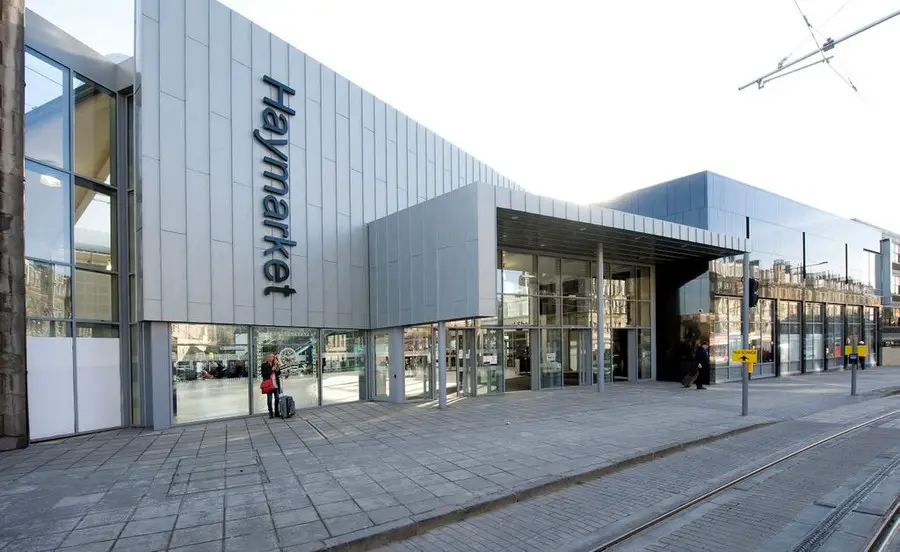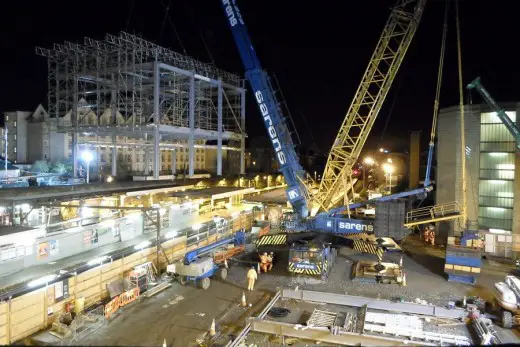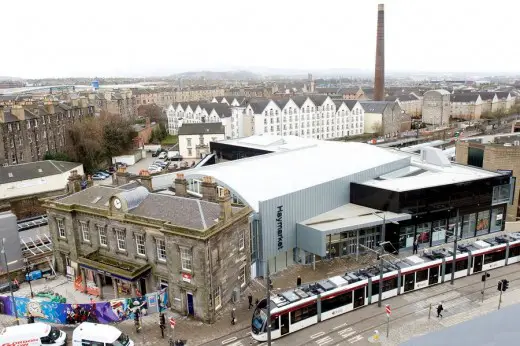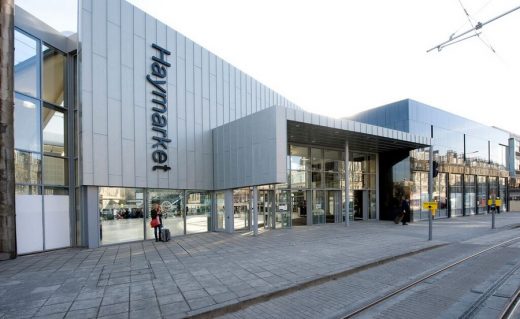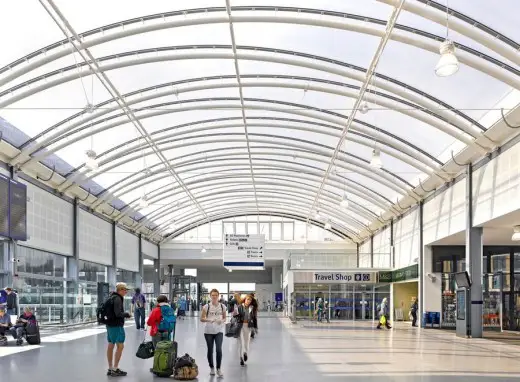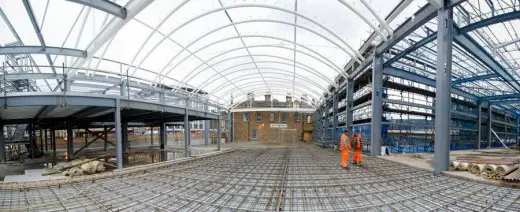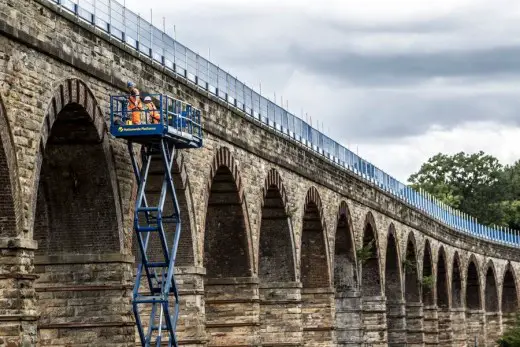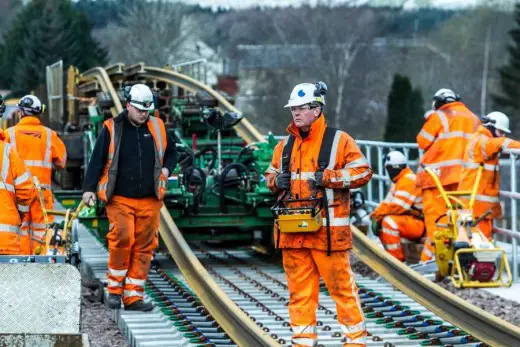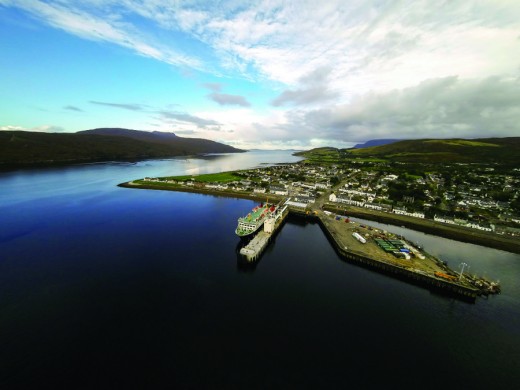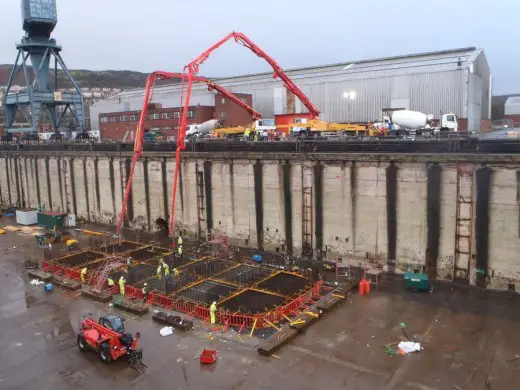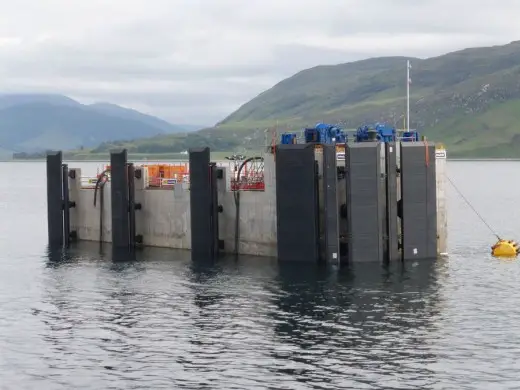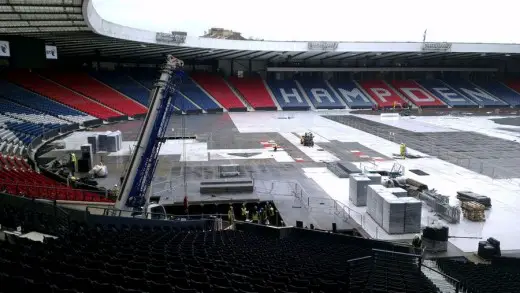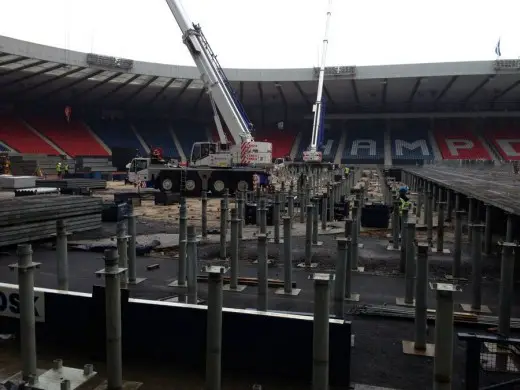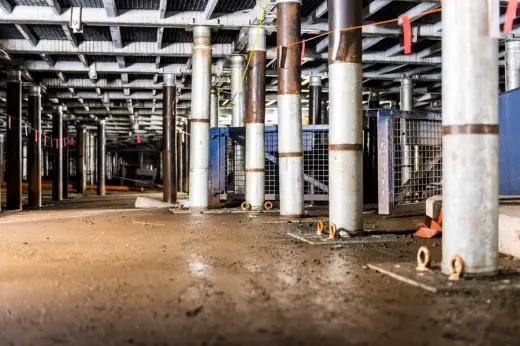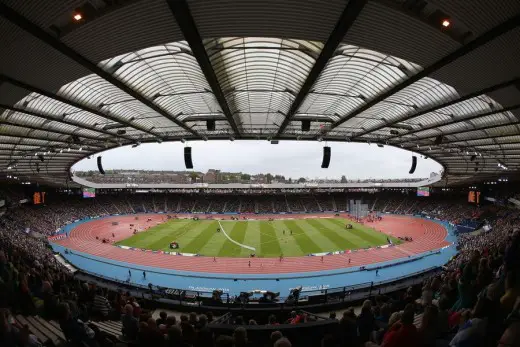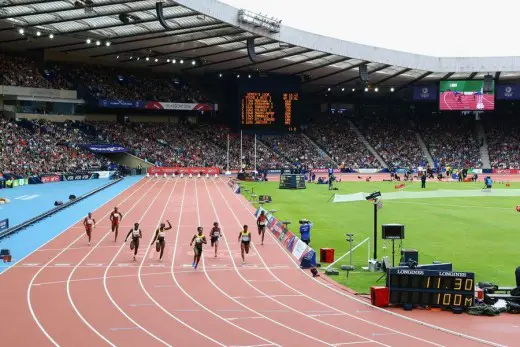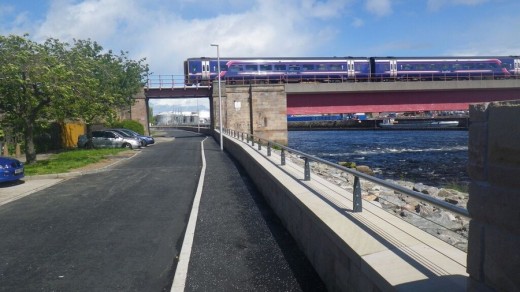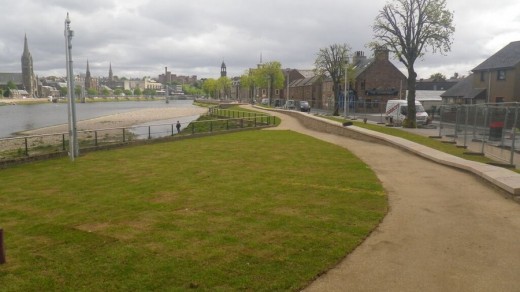Saltire Civil Engineering Awards in 2015, Scottish Prize, Buildings, Winners, Architects
Saltire Civil Engineering Awards 2015 News
Scottish Design Prize – News + Results: Haymarket Station Building, Edinburgh
28 Oct 2015
Saltire Civil Engineering Awards 2015 Winners
New look Haymarket station scoops top engineering awards
Scotland’s fourth busiest railway station has been crowned the overall winner of the 2015 Saltire Civil Engineering Awards, following completion of a major refurbishment and extension project. Announced annually, the Awards are a much coveted accolade from the Saltire Society and the Institution of Civil Engineers Scotland recognising excellence and innovation in civil engineering.
The state-of-the-art transport hub at Haymarket in Edinburgh’s west end has been created to accommodate a predicted 6 million increase in passenger numbers over the next 15 years. The £25 million redevelopment includes the refurbishment of an existing Grade A listed station building and a major extension.
The new concourse building, which bridges the platforms and rail lines, was constructed in a former car park adjacent to the station and required two 110 tonne modules to be lifted into place overnight. This innovative solution enabled the completion date to be brought forward by nearly a year, and ensured all work was undertaken while the station was fully operational and without disruption to train services.
Other projects to receive commendations this year include the Borders Railway, Ullapool Harbour Improvements, the redevelopment of Hampden Park for the Glasgow 2014 Commonwealth Games and flood alleviation in Inverness. The Awards were presented at a gala event in the National Museum of Scotland on Wednesday 28 October.
Haymarket Station Redevelopment Awards Background
The Saltire Awards for civil engineering recognise excellence and innovation in civil engineering and are a collaboration between the Saltire Society and the Institution of Civil Engineers (ICE) Scotland.
17 entries were received this year with one overall winner and 4 commendations.
The commended projects are:
Borders Railway
Clients: Transport Scotland; Network Rail
Principal Contractor: BAM Nuttall
This new line, the longest new domestic rail line to be built in the UK for over 100 years, is reconnecting the Borders to the national rail network and bringing investment and housing back to areas that have suffered population loss. It has seven new stations, 61km of track including 3 passing loops and capacity for further dualling and electrification has been built in.
The railway follows 45 km of the original route and 5 km of new route, passing beneath Edinburgh City bypass before rising up over a new 90 metre bridge across the existing Lothianbridge viaduct and out into the country where some 95 bridges have been regenerated along with 2 tunnels and 42 new structures have been installed. This was a challenging project extending over a 30 mile distance from brownfield urban areas to outstanding areas of natural beauty.
Every viable existing structure was retained after careful examination and survey. Tunnels and bridges were lowered to accommodate overhead line capacity. The project demonstrates an exceptional commitment to collaboration and coordination and communication with its stakeholders. The social and economic benefits the completed project will bring to the area it serves will be immense.
Judges’ comments: “The project demonstrated an exceptional commitment to collaboration, coordination and communication with its stakeholders to deliver the longest new domestic railway in Britain for more than a century. The social, economic and environmental benefits the completed project will bring to the area it serves will be of great significance.”
Ullapool Harbour Berth Improvements
Client: Ullapool Harbour Trustees / Caledonian Maritime Assets Ltd.
Designer: Wallace Stone LLP
Contractor: RJ MacLeod Ltd.
An increase in traffic, following the introduction of Road Equivalent Tariff (RET) and the introduction of a new vessel, the MV Loch Seaforth, which is substantially larger in capacity and displacement tonnage than the existing ferry, were the key drivers behind this project. The initial design solution of a cross tied combi wall was abandoned when it became clear that up to 40% of all ferry sailings could be lost during construction of the pier extension resulting in unacceptable loss of revenue to local economies.
Lateral thinking led to the development of an ingenious solution – the offsite construction of a concrete caisson in Greenock which was then towed to Ullapool and sunk into position on the prepared sea bed. The successful preparation of the caisson foundation and the installation of the caisson at the first attempt without any disruption to ferry sailings are testament to excellent planning and the skills of the project team.
Judges’ comments: “The adoption of a caisson to form the pier extension is a fine example of lateral thinking to provide an appropriate low risk solution to a difficult construction problem. That the works were completed on time with no loss of sailings is testament to the skills of all members of the project team.”
Hampden Park Redevelopment (Glasgow 2014 Commonwealth Games)
Client: Glasgow 2014
Contractor: WH Malcolm Ltd.
Architect: Holmes Miller
The temporary transformation of Scotland’s National Stadium to host track and field and the Glasgow 2014 Commonwealth Games closing ceremony was achieved by raising the playing surface by almost two metres, gaining the width and length required for an IAFF approved athletics track. Engineers pioneered a raised deck system made up of 1,200 base panels supported by over 6,000 structural steel posts and weighing over 1000 tonnes.
The first time this technology has been used on this scale to deliver a world class athletics event, the approach is already being termed as the ‘Glasgow Solution’ in worldwide athletics circles, with widespread interest in the potential it creates for a range of venues to host worldclass athletics events at stadia which are not purpose built.
The effects of a small force event producing large movement were exemplified by the swaying of the Millennium Bridge in London, and the potential effects of resonance and frequency on the athletes was addressed thanks to an exceptionally high level of initiative and original thinking on the part of the designers.
Judges’ comments: “This project demonstrated an exceptionally high level of initiative and original thinking in adopting systems and techniques never previously used on such a large scale. It produced a world class athletics stadium at a relatively modest cost, which has now been fully restored for football, with maximum re-use and recycling of materials.”
River Ness Flood Alleviation
Client: Highland Council
Designer: Mott MacDonald
Contractors: Coffey Group, Morgan Sindall, McLaughlin & Harvey Construction Ltd.
The River Ness Flood Alleviation Scheme provides flood protection to over 1000 properties in the heart of Inverness and reconnects the riverfront with the city centre. The historic riverside environment has been enhanced making it attractive and accessible and promoting active travel. The primary flood defence is a number of reinforced concrete retaining walls with much of the hard engineering hidden under the new streetscape with mature trees and river banks retained to maintain the natural look of the area. A practical civil engineered solution to a serious problem which is also an asset for Inverness to be enjoyed for generations to come.
Judges’ comments: “The project demonstrates a high level of skill, commitment, design and execution. The project team has delivered a practical civil engineered solution to a serious problem and have developed this into an asset for Inverness which will be enjoyed for generations.”
The Saltire Society is a membership organisation, which celebrates the Scottish imagination through support and promotion. It spans all areas of culture and heritage and works to preserve the best in Scottish tradition while encouraging new ideas and developments, helping great things to be imagined and created in Scotland.
Founded in 1818, the Institution of Civil Engineers is one of the oldest engineering institutions in the world with a global membership of 80,000. Our 8,000 Scottish members design, build and maintain Scotland’s water, waste, transport energy and flooding infrastructure. ICE is a professional qualification body promoting excellence and innovation in the industry, inspiring the next generation into the profession and providing expert advice to government on infrastructure.
Saltire Civil Engineering Awards 2015 images / information received 281015
Location: Scotland
Saltire Awards
Saltire Society Design Awards
Cape Cove:
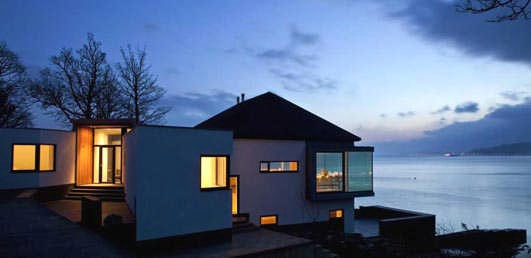
photograph from Saltire Awards
Saltire Society Housing Design Awards
Bogbain Mill:

photograph : Andrew Lee
– Kirk House by Dualchas Architects:

photograph from Saltire Awards
– The Edge, Sandyhills, Dumfries & Galloway (Carole Naylor & John Chesbrough)

photographs from Saltire Awards
– The ‘Model D’ House, Insch, Aberdeenshire (Gokay Deveci Chartered Architect)

images © Stuart Johnstone Photography
– Ackling Cook Bothy, Ettrick Valley (Reiach and Hall Architects)
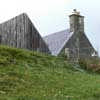
image © Reiach and Hall Architects
Ackling Cook Bothy
– 4 Linsiadar, Uig, Isle of Lewis (Studio KAP)
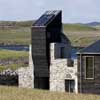
photograph : Keith Hunter
4 Linsiadar
– Bogbain Mill, Loch Ussie (Rural Design)
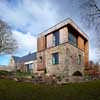
photograph : Andrew Lee
Bogbain Mill
– House in Roslin, Chapel Loan, Roslin (Reiach and Hall Architects)
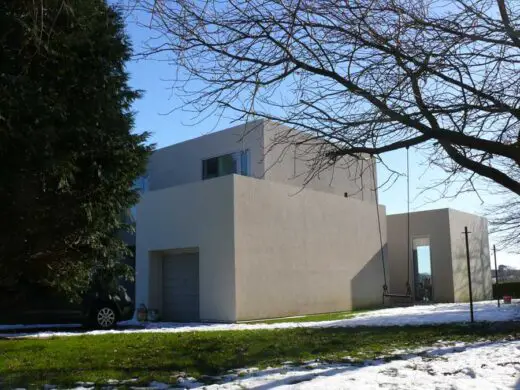
photo © Reiach and Hall Architects
House in Roslin
– R-House, Drynoch, Isle of Skye (Rural Design)
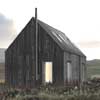
image from architects
R-House
– Marlaw, Sprinkell Avenue, Pollockshields (Gareth Hoskins Architects)

images © Andrew Lee Photographer
– Promenade House, Musselburgh (Wiszniewski Thomson Architects)

photographs from Saltire Awards
House in Boreraig by Dualchas Architects:

photograph from Saltire Awards
Architecture in Scotland
Contemporary Architecture in Scotland
Scotland’s Housing Expo

photo : Paul Zanre Photography
Scottish Borders house
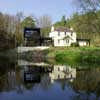
image from Saltire Awards
Saltire Awards – Previous Winners
Contemporary Architectural Awards
Contemporary Architectural Designs in Scotland
Contemporary Scottish Architecture
Comments / photos for the Saltire Civil Engineering Awards 2015 page welcome

